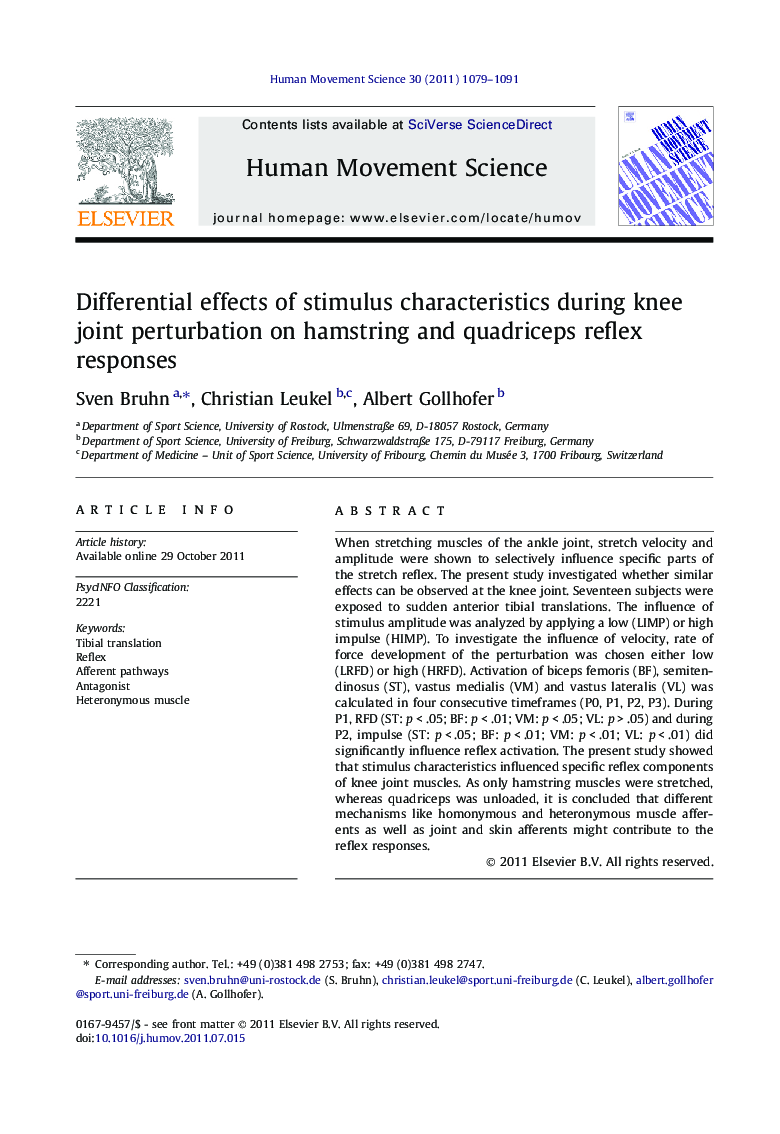| کد مقاله | کد نشریه | سال انتشار | مقاله انگلیسی | نسخه تمام متن |
|---|---|---|---|---|
| 928487 | 1474233 | 2011 | 13 صفحه PDF | دانلود رایگان |

When stretching muscles of the ankle joint, stretch velocity and amplitude were shown to selectively influence specific parts of the stretch reflex. The present study investigated whether similar effects can be observed at the knee joint. Seventeen subjects were exposed to sudden anterior tibial translations. The influence of stimulus amplitude was analyzed by applying a low (LIMP) or high impulse (HIMP). To investigate the influence of velocity, rate of force development of the perturbation was chosen either low (LRFD) or high (HRFD). Activation of biceps femoris (BF), semitendinosus (ST), vastus medialis (VM) and vastus lateralis (VL) was calculated in four consecutive timeframes (P0, P1, P2, P3). During P1, RFD (ST: p < .05; BF: p < .01; VM: p < .05; VL: p > .05) and during P2, impulse (ST: p < .05; BF: p < .01; VM: p < .01; VL: p < .01) did significantly influence reflex activation. The present study showed that stimulus characteristics influenced specific reflex components of knee joint muscles. As only hamstring muscles were stretched, whereas quadriceps was unloaded, it is concluded that different mechanisms like homonymous and heteronymous muscle afferents as well as joint and skin afferents might contribute to the reflex responses.
Journal: Human Movement Science - Volume 30, Issue 6, December 2011, Pages 1079–1091